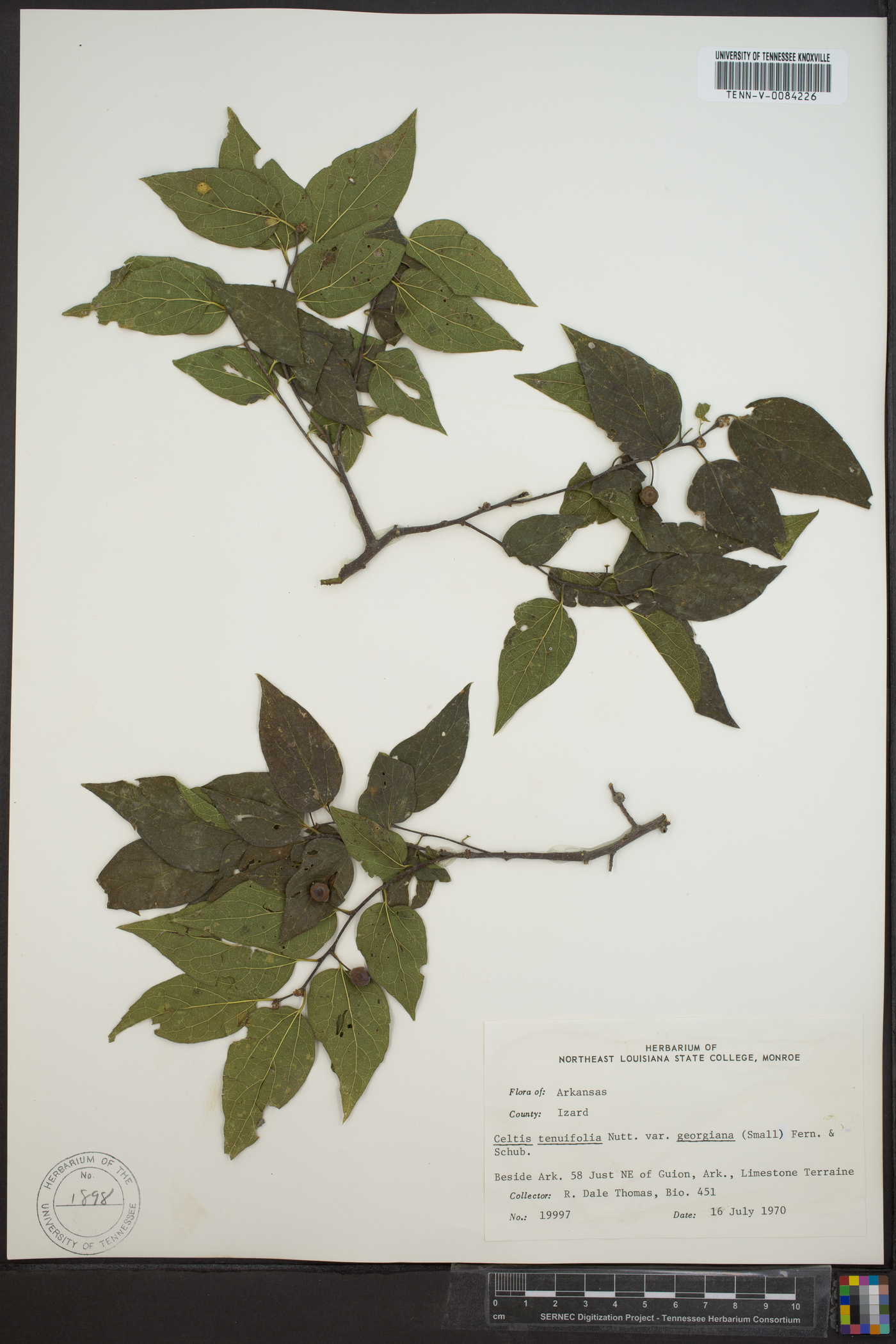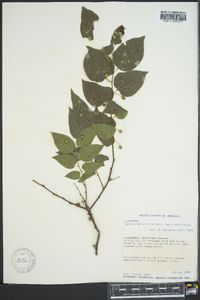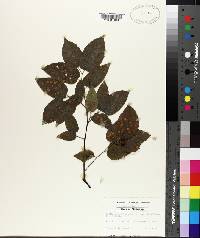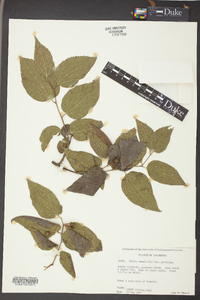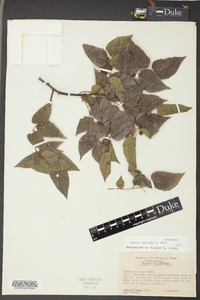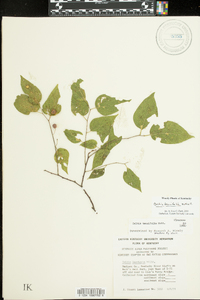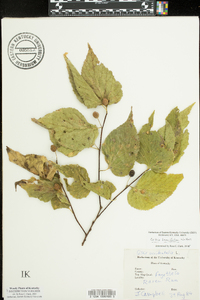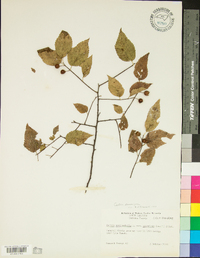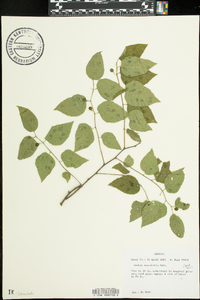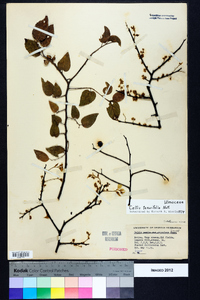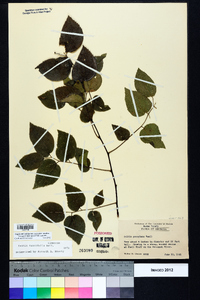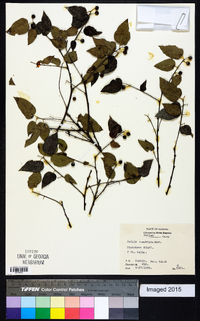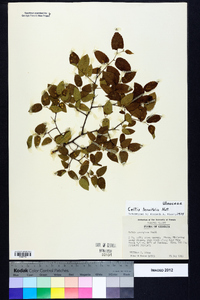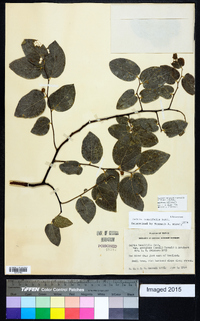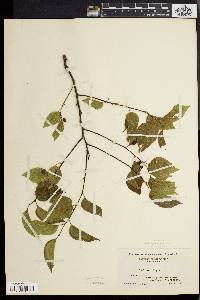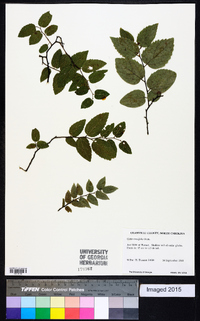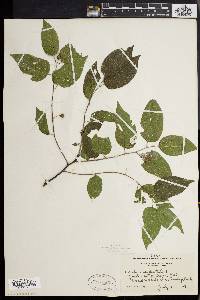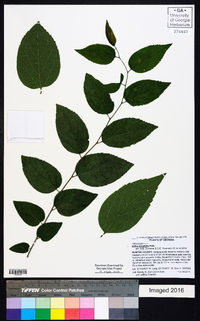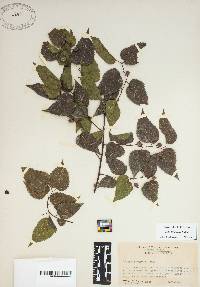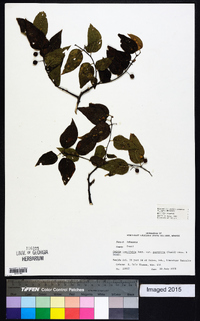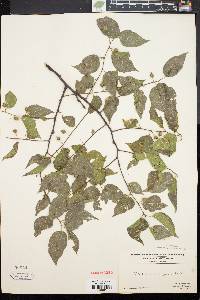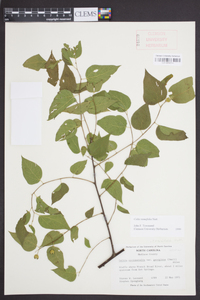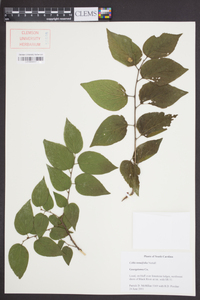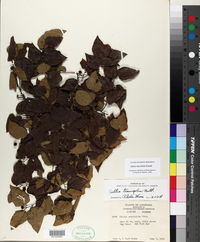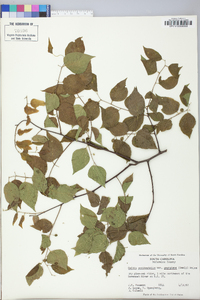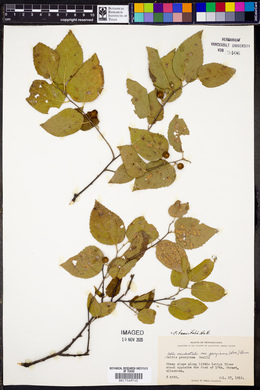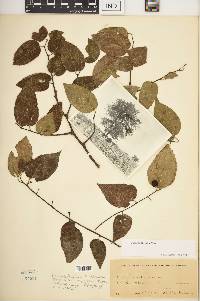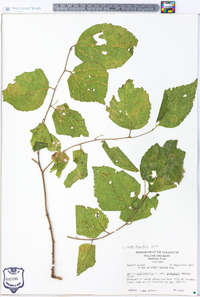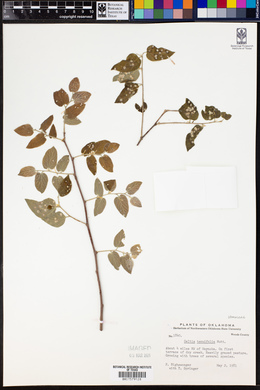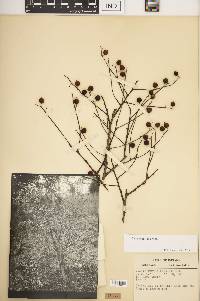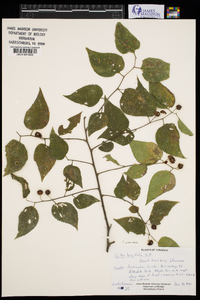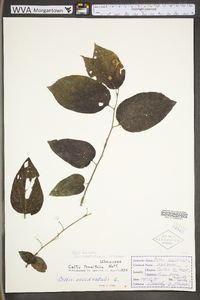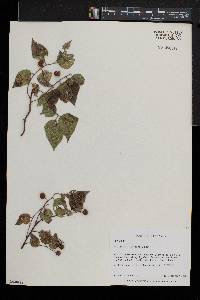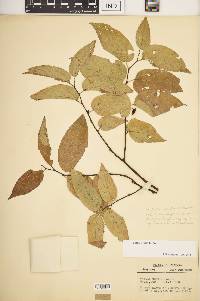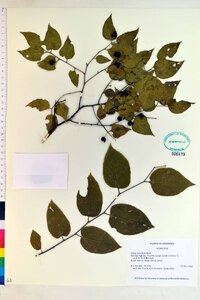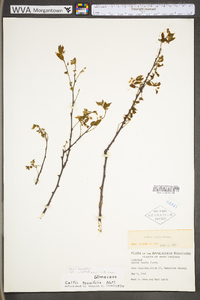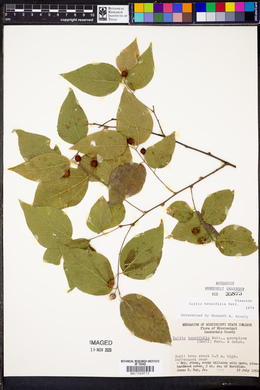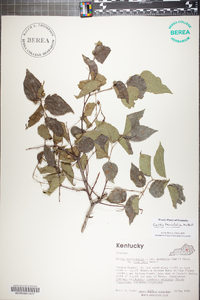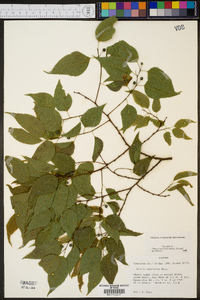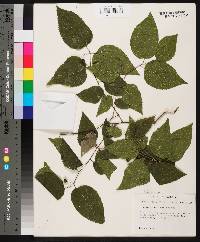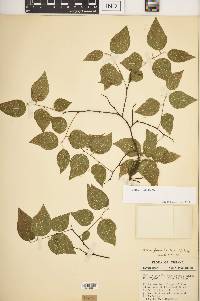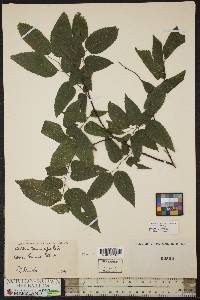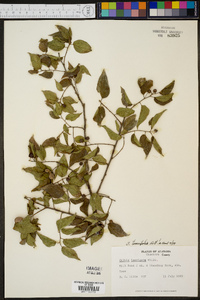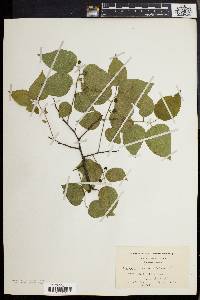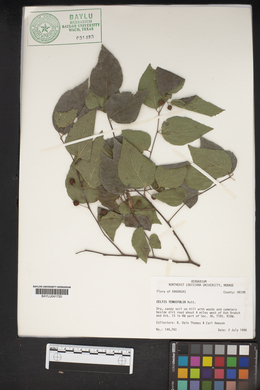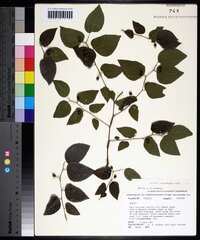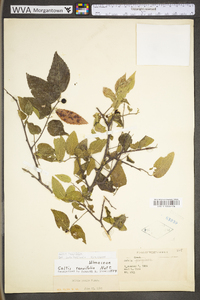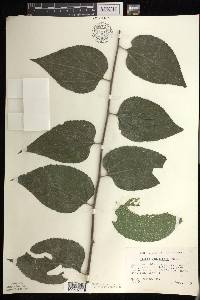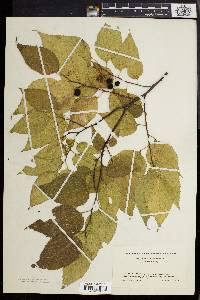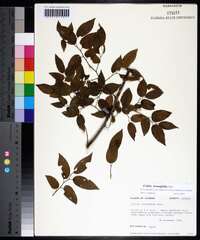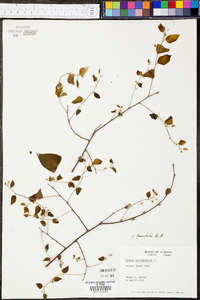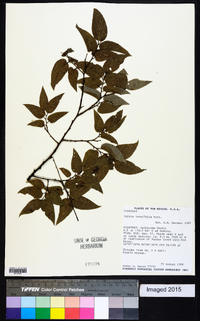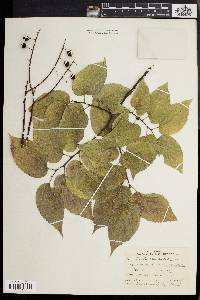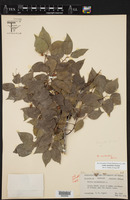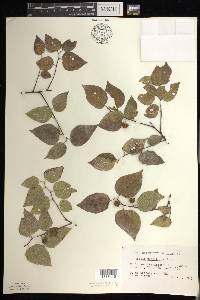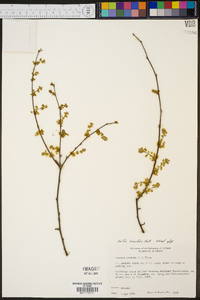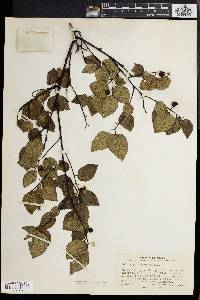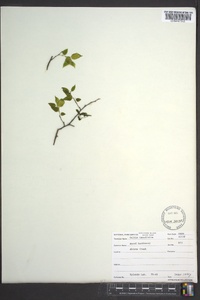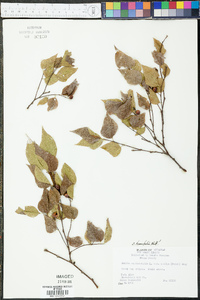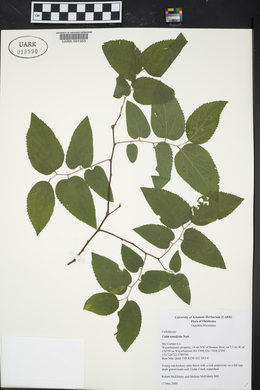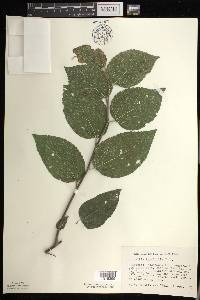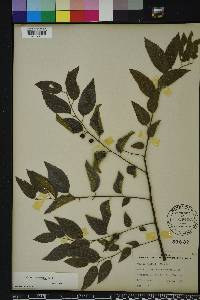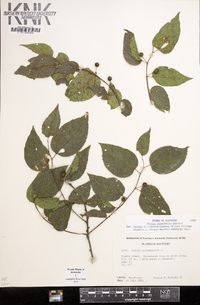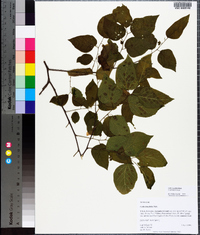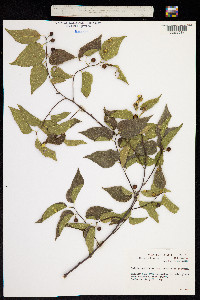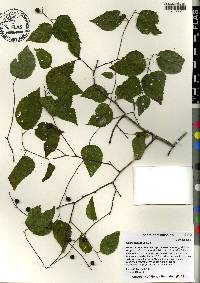
|
|
|
|
Family: Cannabaceae
Dwarf Hackberry, more...Georgia hackberry
[Celtis pumila var. deamii Sarg.] |
Shrubs or small trees , to 8 m; trunks to 30 cm; crowns narrow. Bark light gray, furrowed, warty. Branches without thorns, upright to spreading, irregular. Leaves: petiole 6-10 mm. Leaf blade ovate to occasionally ovate-elliptic, (2-)5-8 × (1-)3-4 cm, base unequal, 1 side rounded, margins mostly entire, serrate and sparingly toothed toward apex, apex blunt, acute, or short-acuminate; surfaces abaxially gray-green, harshly pubescent, adaxially dark gray-green, scabrous. Inflorescences: flowers solitary or few-flowered clusters. Drupes orange to brown or cherry red, glaucous, orbicular, 5-8 mm diam., beakless; pedicel 3-13 mm. Stones cream colored, 5-7 × 5-6 mm, reticulate. Flowers spring (Apr-May). On slopes and along streams in open woods; 0-500 m; Ont.; Ala., Ark., Del., D.C., Fla., Ga., Ill., Ind., Kans., Ky., La., Md., Mich., Miss., Mo., N.J., N.C., Ohio, Okla., Pa., S.C., Tenn., Tex., Va., W.Va. Small tree or shrub 2 - 7 m tall, trunk diameter 8 - 25 cm Leaves: alternate, with short, often hairy leafstalks. The blade is grayish green, sometimes finely hairy above, paler and hairy beneath, 4 - 6 cm long, 2.5 - 4 cm wide, and egg-shaped with a rounded, moderately asymmetrical base and short-pointed tip, bearing a few coarse teeth along the margins, thick, often leathery, with three to five major veins per side. Flowers: either male or female, borne on the same tree (monoecious) in drooping clusters or solitary, greenish yellow, inconspicuous, without petals. Fruit: fleshy, single-seeded (drupe), short-stalked, drooping, pinkish brown to reddish purple, 5 - 7 mm long, spherical, smooth. Pit smooth. Bark: pale gray, thin, and smooth, becoming warty, rough, and scaly with age. Twigs: slender, stiff, zigzag, and green, becoming reddish brown to gray. Leaf scars crescent-shaped with one to three bundle scars. Buds: grayish brown, 1 - 2 mm long, slender, oval, pointed, finely hairy. Form: irregular and asymmetrical, with many stiff, twisted, and intergrown branches. Trunk often divided. Similar species: Of the two Celtis species found in the Chicago Region, this one is rare. Celtis occidentalis differs by its larger size; its larger, long-tipped, and coarsely toothed leaves (usually); its 1 - 2 cm long fruit stalks; and its larger, dark purple fruit. However, the leaves of C. tenuifolia can be extremely variable, as some may or may not be as toothed, hairy, or leathery as others. Note: Leaves may resemble those of Ulmus, but Celtis species have three main veins arising from the base of each blade. Flowering: April to May, after the leaves are partly grown Habitat and ecology: In the Chicago Region, Celtis tenuifolia is known only to occur in Lake and Porter counties in Indiana. There it grows in the dune area of Lake Michigan, in calcareous sands near the lake. Outside the region, it is characteristic of dry-mesic to dry sites. Occurence in the Chicago region: native Notes: Although tenuifolia means "thin leaf," the leaves actually vary in thickness. The wood is used for fence posts, but has no real commercial value. Etymology: Celtis is the Greek word for the hackberry tree (hackberry is actually a corruption of the Scottish name Hagberry, a species of cherry tree). Tenuifolia is Latin for "thin leaf." Author: The Morton Arboretum Shrub or small, irregularly and compactly branched tree to 5 m (rarely more); lvs firm, dark green above, paler beneath, ovate or broadly ovate to deltoid, mostly 3-6 cm, entire or with a few low teeth above the middle, scabrous and impressed-veiny above, pubescent beneath and on the petiole, only slightly cordate at the oblique to nearly symmetrical base; major areoles mostly 3-5 on each side, style tardily deciduous; fr subglobose, 5-9 mm, salmon-colored, insipid, on a pedicel 3-6 mm that is to about as long as the subtending petiole; stone shallowly and obscurely pitted. Rocky hills and barrens, sometimes on dunes; Fla. to Tex., n. to N.J., Ind., Mo., and Okla., and locally to s. Mich. and s. Ont. (C. georgiana; C. occidentalis var. pumila) Gleason, Henry A. & Cronquist, Arthur J. 1991. Manual of vascular plants of northeastern United States and adjacent Canada. lxxv + 910 pp. ©The New York Botanical Garden. All rights reserved. Used by permission. From Flora of Indiana (1940) by Charles C. Deam Very local and rare to infrequent where it is found. In Lake County it was rather frequent on the sand dunes about Miller. I found it in Steuben County on the high, gravelly slope east of Hogback Lake. In Lawrence County a few very small trees are found on a limestone slope in Spring Mill State Park, associated with dwarf specimens of Zanthoxylum and Rhamnus lanceolata. In Washington County a few trees were found on a wooded slope near Big Spring. In Jefferson County Miss Edna Banta found a few trees in Clifty Falls State Park near the southern end of Trail no. 1. It is found in Crawford County along Blue River near Milltown. In Harrison County it occurs on a rocky, wooded slope 3 miles east of Elizabeth. In Perry County I found it on several ridges about 7 miles east of Cannelton. The leaves of this species are extremely variable, but no more so than its habitat. ...... Indiana Coefficient of Conservatism: C = 8 Wetland Indicator Status: UPL Deam (1932): This species is usually a small shrub, and usually bears fruit when only 1.5-2 meters (5 or 6 feet) tall. Only a few trees have been seen that were 40 cm (4 inches) in diameter. The small size at which this species fruits easily distinguishes it from other species in our area. Its habitat also serves to distinguish it. Along Lake Michigan it grows on the dry sand dunes, and in southern Indiana it grows on dry rocky slopes. |

